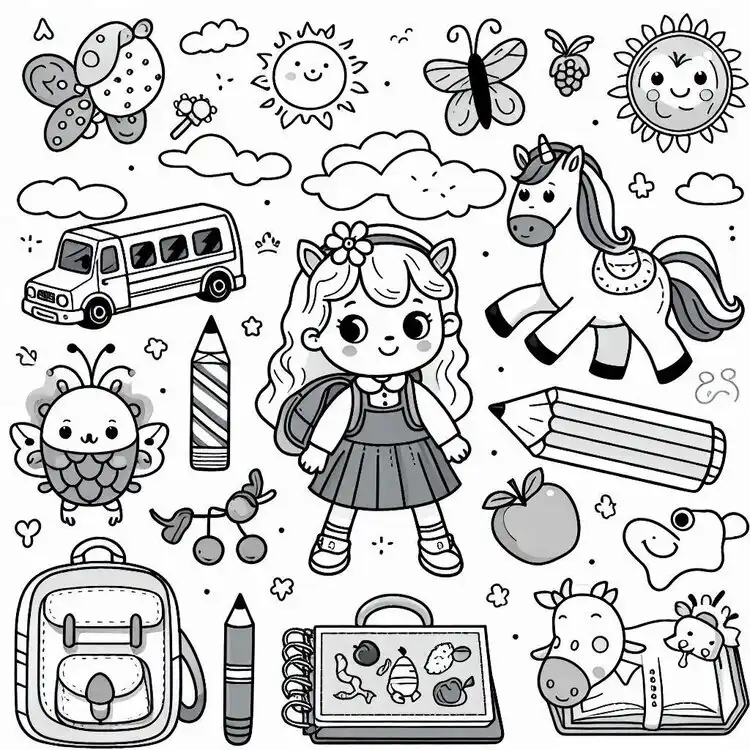Cognitive Development
70%
Enhances problem-solving skills and critical thinking.
TIP: Use online resources and tutorials for new craft ideas and inspiration.
2025-05-10
Pretend play significantly contributes to various aspects of a toddler's development, such as cognitive growth, social skills, and emotional expression.
70%
Enhances problem-solving skills and critical thinking.
TIP: Use online resources and tutorials for new craft ideas and inspiration.
80%
Fosters teamwork and communication amongst peers.
75%
Allows for expression of feelings in a constructive way.
Creating a DIY pumpkin patch for toddlers is a wonderful way to spark their imagination! Pretend play is not just fun; it’s a vital part of cognitive and social development. Through this activity, children learn to express themselves, develop problem-solving skills, and enhance their creativity, all while having a blast!
Imagine your little ones working together to create their own pumpkin patch, pretending to pick pumpkins and maybe even make up stories. This kind of interaction helps them learn teamwork and communication skills. As they engage in pretend play, they're also developing important skills that will benefit them in various aspects of life!
Pretend play is essential because it allows toddlers to explore different roles and scenarios. When they engage in these creative activities, they can express their feelings and ideas in a safe environment. This helps them build confidence and social skills as they interact with others while playing. For more engaging activities that boost learning and development, check out our guide on easy toddler activities.
Additionally, pretend play can boost cognitive development. When children act out scenarios, they are practicing decision-making and critical thinking. They also learn to understand the world around them, making sense of experiences through imaginative play.
Setting up a toddler-friendly pumpkin patch requires some simple materials. First, you'll need brown sheets to create the ground. They provide a nice base and help set the scene. Next, grab some green vines or fabric to represent the pumpkin plants.
Don’t forget the most important part: pretend pumpkins! You can use various items like orange balls, paper pumpkins, or even craft pumpkins to make it more exciting. Safety is key, so ensure all materials are age-appropriate and non-toxic!

To enhance the pumpkin patch experience, consider adding some fun seasonal crafts! These activities can keep toddlers engaged while allowing them to explore their creativity. For example, you could have a craft station where kids can paint their own pumpkins or create spooky decorations. For more pumpkin-themed craft ideas, check out our article on pumpkin painting and sensory play.
Another idea is to set up a leaf collage station where children can collect leaves and stick them onto paper. This not only encourages creativity but can also help improve their fine motor skills. Crafting in the pumpkin patch is a festive way to celebrate the season!
Did you know? Incorporating music and movement into your DIY pumpkin patch can enhance the experience even further! Consider playing seasonal songs or nursery rhymes while the children engage in play. This not only adds an auditory element but also encourages physical activity, helping toddlers develop coordination and rhythm while they have fun!
As we wrap up our exploration of creating a fun DIY pumpkin patch, it's essential to recognize the remarkable benefits of hands-on, imaginative play for toddlers. Engaging in activities like this not only stimulates their creativity but also enhances their cognitive and social skills. When children dive into pretend play, they’re not just having fun; they’re learning how to cooperate, communicate, and solve problems in a safe and enjoyable environment. For more ideas on creative learning activities, check out our comprehensive guide on fun crafting ideas for kids.
Incorporating a DIY pumpkin patch into your toddler's playtime can foster a sense of wonder and exploration. The vibrant colors, textures, and themes inspire curiosity, making learning an adventure! Through this creative play, little learners can develop critical thinking skills and build a foundation for future learning experiences.
Now that we've explored the joys and benefits of a DIY pumpkin patch, I’d love to hear from you! Have you tried setting up a pumpkin patch for your little ones? What creative ideas or activities did you find most enjoyable? Sharing your experiences can help build a supportive community where parents and caregivers can exchange tips and inspiration.
Feel free to drop your thoughts or photos of your pumpkin patch play in the comments! At Tots Tutor, we’re all about empowering each other with creative learning activities that delight toddlers and make cherished memories. Let’s inspire one another to bring more hands-on learning into our children's lives! For more seasonal activities, you might enjoy exploring our ideas on Halloween crafts for kids .
Here is a quick recap of the important points discussed in the article:
Pretend play significantly boosts cognitive development by enhancing problem-solving and critical thinking skills. It also fosters social skills through teamwork and communication, and allows for healthy emotional expression.
You'll need brown sheets for the ground, green vines or fabric for the plants, pretend pumpkins (safe and age-appropriate), and small baskets for collecting.
Incorporate seasonal crafts like painting pumpkins or making leaf collages to further boost creativity and fine motor skills. Adding music and movement can enhance the experience.
Hands-on play like creating a DIY pumpkin patch fosters critical thinking, problem-solving, and communication skills—building a strong foundation for future learning.
We hope this article inspires you to create a fun and educational DIY pumpkin patch for your little ones! For more ideas on engaging your toddler, check out our post on fine motor skills activities.
